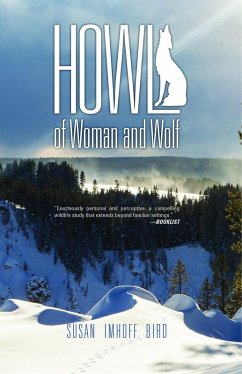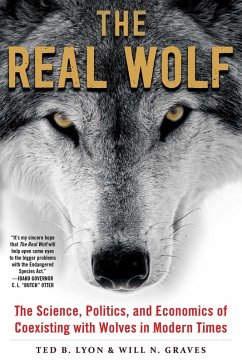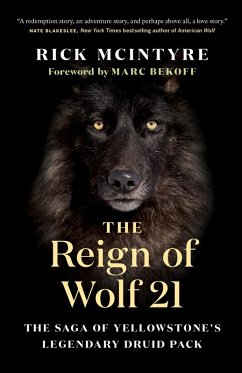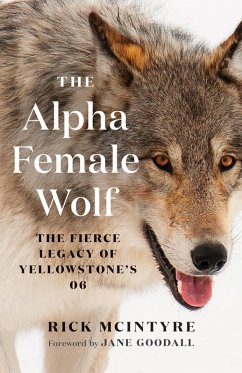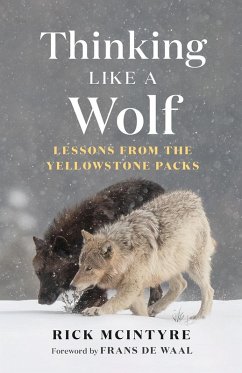
The Killing of Wolf Number Ten (eBook, ePUB)
The True Story

PAYBACK Punkte
3 °P sammeln!
A killer. A manhunt. The triumph of justice and of the wolf. The greatest event in Yellowstone history. Greater Yellowstone was the last great truly intact ecosystem in the temperate zones of the earth-until, in the 1920s, U.S. government agents exterminated its top predator, the gray wolf. With traps and rifles, even torching pups in their dens, the killing campaign was entirely successful. The howl of the "evil" wolf was heard no more. The "good" animals-elk, deer, bison-proliferated, until they too had to be "managed." Two decades later, recognizing that ecosystems lacking their keystone pr...
A killer. A manhunt. The triumph of justice and of the wolf. The greatest event in Yellowstone history.
Greater Yellowstone was the last great truly intact ecosystem in the temperate zones of the earth-until, in the 1920s, U.S. government agents exterminated its top predator, the gray wolf. With traps and rifles, even torching pups in their dens, the killing campaign was entirely successful. The howl of the "evil" wolf was heard no more. The "good" animals-elk, deer, bison-proliferated, until they too had to be "managed."
Two decades later, recognizing that ecosystems lacking their keystone predators tend to unravel, the visionary naturalist Aldo Leopold called for the return of the wolf to Yellowstone. It would take another fifty years for his vision to come true.
In the early 1990s, as the movement for Yellowstone wolf restoration gained momentum, rage against it grew apace. When at last, in February 1995, fifteen wolves were trapped in Alberta and brought to acclimation pens in Yellowstone, even then legal and political challenges continued. There was also a lot of talk in the bars about "shoot, shovel, and shut up."
While the wolves' enemies worked to return them to Canada, the biologists in charge of the project feared that the wolves might well return on their own. Once they were released, two packs remained in the national park, but one bore only one pup and the other none. The other, comprising Wolves Nine and Ten and Nine's yearling daughter, disappeared.
They were in fact heading home. As they emerged from protected federal land, an unemployed ne'er-do-well from Red Lodge, Montana, trained a high-powered rifle on Wolf Number Ten and shot him through the chest.
Number Nine dug a den next to the body of her mate, and gave birth to eight pups. The story of their rescue and the manhunt for the killer is the heart of The Killing of Wolf Number Ten.
+
Read this book, and if you are ever fortunate enough to hear the howling of Yellowstone wolves, you will always think of Wolves Nine and Ten. If you ever see a Yellowstone wolf, chance are it will be carrying their DNA.
The restoration of the wolf to Yellowstone is now recognized as one of conservation's greatest achievements, and Wolves Nine and Ten will always be known as its emblematic heroes.
Greater Yellowstone was the last great truly intact ecosystem in the temperate zones of the earth-until, in the 1920s, U.S. government agents exterminated its top predator, the gray wolf. With traps and rifles, even torching pups in their dens, the killing campaign was entirely successful. The howl of the "evil" wolf was heard no more. The "good" animals-elk, deer, bison-proliferated, until they too had to be "managed."
Two decades later, recognizing that ecosystems lacking their keystone predators tend to unravel, the visionary naturalist Aldo Leopold called for the return of the wolf to Yellowstone. It would take another fifty years for his vision to come true.
In the early 1990s, as the movement for Yellowstone wolf restoration gained momentum, rage against it grew apace. When at last, in February 1995, fifteen wolves were trapped in Alberta and brought to acclimation pens in Yellowstone, even then legal and political challenges continued. There was also a lot of talk in the bars about "shoot, shovel, and shut up."
While the wolves' enemies worked to return them to Canada, the biologists in charge of the project feared that the wolves might well return on their own. Once they were released, two packs remained in the national park, but one bore only one pup and the other none. The other, comprising Wolves Nine and Ten and Nine's yearling daughter, disappeared.
They were in fact heading home. As they emerged from protected federal land, an unemployed ne'er-do-well from Red Lodge, Montana, trained a high-powered rifle on Wolf Number Ten and shot him through the chest.
Number Nine dug a den next to the body of her mate, and gave birth to eight pups. The story of their rescue and the manhunt for the killer is the heart of The Killing of Wolf Number Ten.
+
Read this book, and if you are ever fortunate enough to hear the howling of Yellowstone wolves, you will always think of Wolves Nine and Ten. If you ever see a Yellowstone wolf, chance are it will be carrying their DNA.
The restoration of the wolf to Yellowstone is now recognized as one of conservation's greatest achievements, and Wolves Nine and Ten will always be known as its emblematic heroes.
Dieser Download kann aus rechtlichen Gründen nur mit Rechnungsadresse in A, D ausgeliefert werden.




